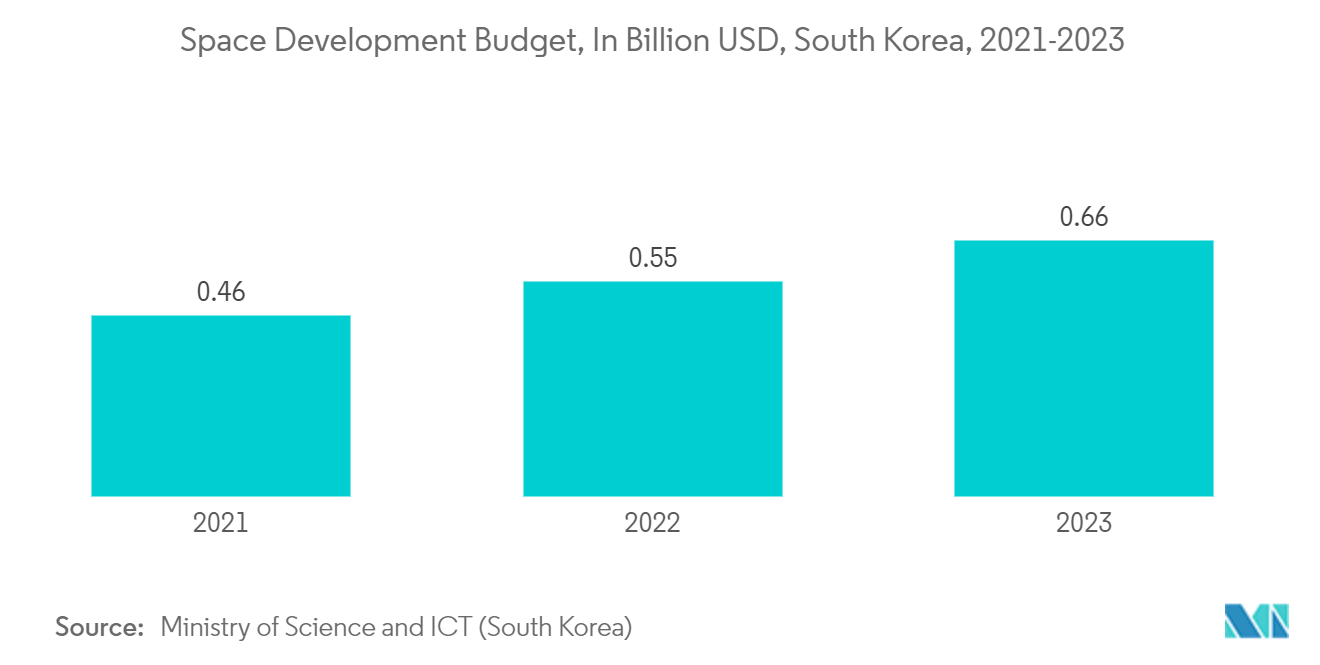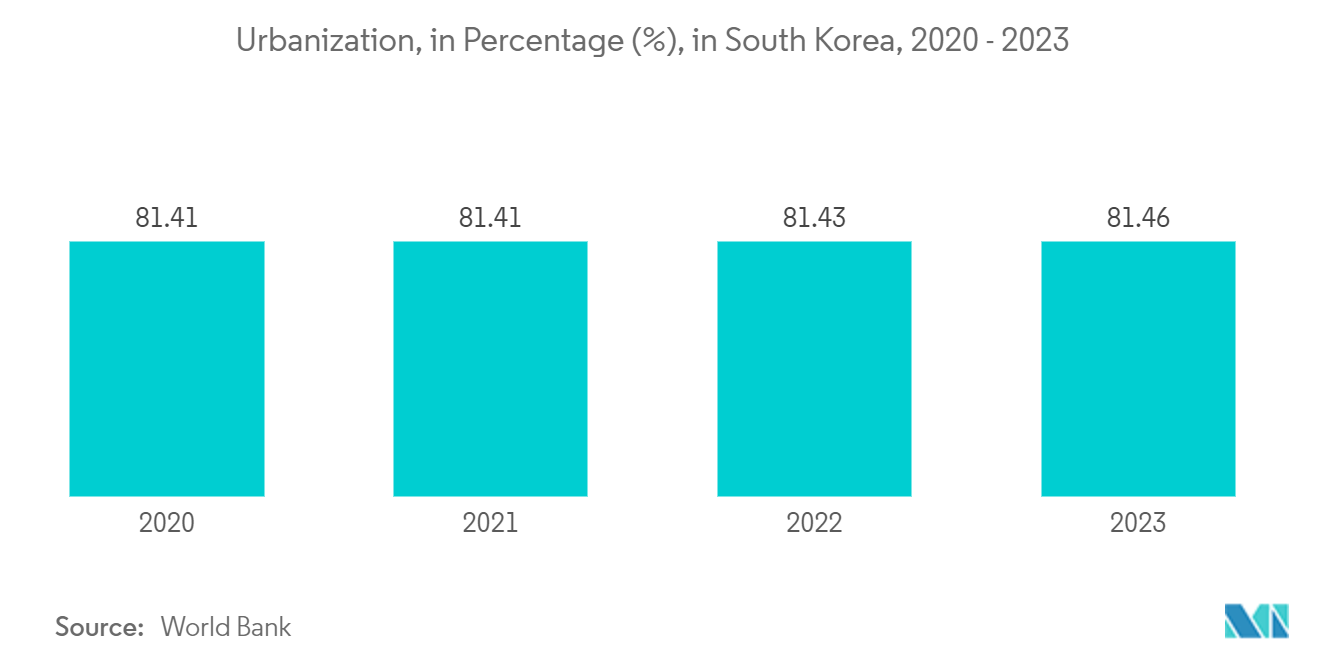Market Trends of South Korea Satellite-based Earth Observation Industry
Government initiatives and investments is analyzed to drive the market during the forecast period
- The growing government initiatives and investments in the country are significantly driving the satellite-based earth observation market in the country. The government of Korea has spent a significant amount on space programs in recent years that positively contribute to the market growth rate. For instance, the South Korean Ministry of Science and ICT approved a total of USD264 million for three remote sensing satellites for use in resource management, environmental monitoring, and space science.
- The Ministry's National Space Committee plan for 2019 to 2025 is set for developing the three remote sensing satellites by private industry with support from the Seoul government. An electro-optical camera will be installed on one of the three remote sensing satellites, and it will be able to take images with a resolution of five meters across a 120-kilometer area. The Korea Forest Service and the South Korean Rural Development Administration will primarily use this satellite for environmental monitoring and resource management.
- Further, the growing government contracts for environmental applications is analyzed to significantly bolster the market growth during the forecast period. For instance, in April 2023, Exotrail announced a new contract with Satrec Initiative, a provider of Earth observation solutions based in Korea, to launch a space-based electric propulsion system for a government mission in Korea.
- Within a year, Exotrail will deliver a spaceware - micro XL propulsion system engineering model and a flight model for a proof-of-concept mission for an innovative earth observation service aiming to validate the use of Satrec Initiative's Earth observation platform in Low Earth Orbit (LEO). They have chosen Exotrail's spaceware product to meet the space mobility needs of an Earth observation satellite that will be used for a Korean government R&D mission.

Urban Development and Cultural Heritage is analyzed to grow significantly during the forecast period
- The country has several urban projects in progress, as indicated in the graph. Seoul came in seventh place on the Mori Memorial Foundation's Institute for Urban Strategies' Global Power City Index in 2022. However, the city intends to advance further to secure one of the top five positions.
- The city is getting closer to achieving this objective with its recently unveiled urban design plan. By changing building codes, building new facilities and precincts, and focusing on architectural design, the government's Urban Architectural Design Innovation Plan wants to turn Seoul into a vibrant cultural hub.
- Seoul has developed its own "urban regeneration" policy to promote active and mature citizenship from the premise that a city is not a place for "development" but rather for "harmonious coexistence" in the midst of rapid sociocultural change. It will implement new reforms to enhance the city and citizens' quality of life.
- Seoul's new vision for the city is laid out in its urban design plan, which will be realized by constructing new amenities for locals and visitors alike. As earth observation aids in urban monitoring systems, land use change, expansion modeling, densification, etc., the growing urban projects in the country are analyzed to boost the market growth rate.
- Further, the country has launched smart city plans. The National Pilot Smart City was built so that sites without plans for development could see how technologies from the Fourth Industrial Revolution could be integrated. By developing an innovative industrial ecosystem that is capable of putting creative business models into action, it is also working toward the objective of demonstrating the leading model for the future smart city. Sejong and Busan are the national pilot smart cities.


